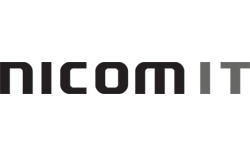The technology you choose to use to run your business shapes and drives your success. Dropped calls can affect sales performance. Poor collaboration tools can slow team communication. However, having effective technology and IT support isn’t just about fixing glitches or installing the right software. It’s about leveraging technology strategically to enhance productivity, secure sensitive data and drive growth in all areas of the business.
As we move into Q2, it’s the perfect time to reflect on how technology impacts your business, what updates you’ve made and how they’ve performed so far and, most importantly, whether your current IT support is helping you thrive or holding you back.
The Cost Of Outdated Or Inadequate IT Support
Many businesses settle for mediocre IT support, thinking it’s cost-effective. However, inadequate IT support can cost your business more than you realize:
- Downtime And Lost Productivity: Poor IT infrastructure leads to frequent downtimes, impacting productivity and revenue. Consider a midsize company experiencing a server failure during peak hours. This could halt operations, prevent employees from accessing essential applications and delay customer transactions. Even a one-hour outage can lead to significant revenue loss and damage to the company’s reputation.
- Security Vulnerabilities: Outdated systems are more vulnerable to cyberattacks. Cyberattacks increased by 75% in 2024 compared to 2023, reaching an all-time high in Q3, as companies experienced an average of 1,876 attacks per week!
- Missed Growth Opportunities: Companies using outdated systems struggle to keep up with competitors who leverage the latest technology for automation, streamlined communication and data analytics. For example, take a retail business stuck with legacy POS systems that fails to integrate online and in-store sales data. As a result, they will miss out on valuable insights that could have informed inventory management and marketing strategies, leading to lost revenue opportunities.
- Employee Frustration And Customer Dissatisfaction: Frequent IT issues can frustrate employees, leading to decreased morale and productivity. Persistent technical problems may cause staff to feel unsupported, potentially increasing turnover rates. But that’s not all; it can affect your customers’ experiences too. Customers expect seamless interactions. System outages or slow response times can lead to dissatisfaction, negative reviews and loss of business.
Example: Imagine an e-commerce site during a flash sale experiencing downtime that leads to abandoned carts and lost sales opportunities, frustrating customers and damaging brand loyalty.


